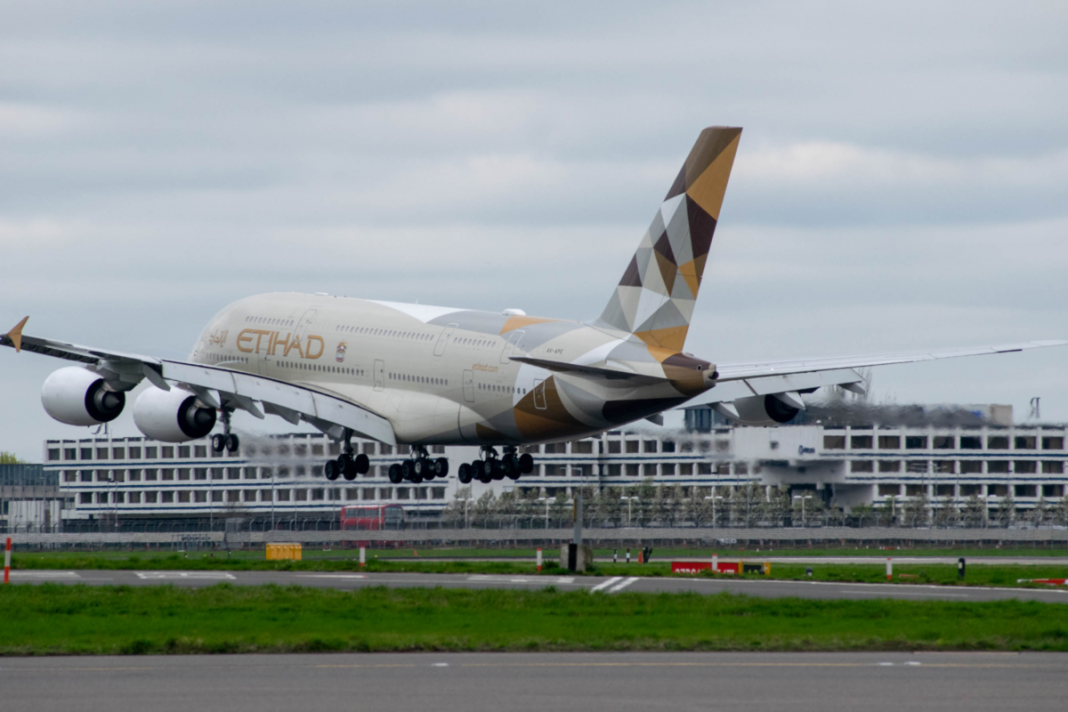Since they burst onto the aviation scene a generation ago, the big Gulf airlines have never shied away from splashing the cash. Glitzy, extravagant, and gaudy, Emirates, Qatar, and Etihad have made their mark on the aviation industry. With fleets of new planes, extensive networks, and frequent schedules, the Gulf airlines have thrown capacity and cash into the aviation market to secure a large slice of it.

It was always a high-risk strategy that was showing some serious flaws before COVID-19 arrived. But 2020 threatened to seriously derail the three Gulf carriers. Saddled with debt, carrying large capital hungry fleets, and reliant on long-haul flying, their business models were threatened more seriously than ever before.
But Emirates, Etihad, and Qatar are still in the air, still throwing capacity onto routes, still trying to dominate markets. As 2020 unfolds, how are these three airlines going?
State of play for the three Gulf airlines
Etihad reported a strong start to 2020 before COVID-19 heavily impacted its performance. The airline carried 3.5 million passengers in the first six months of 2020, compared to 8.2 million in the first six months of 2019, a reduction of 58%. The average load factor in the first six months of 2020 was 71%. Operating loss for this period increased to US$758 million, compared to a loss of US$586 million in the first six months of 2019. This loss was driven by a 38% drop in revenues, which stood at US$1.7 billion in the first six months of 2020, compared to US$2.7 billion in the corresponding period last year.
Regional neighbor Emirates began the year with a similar spring in its step. COVID-19 also sideswiped the Dubai-based airline. Unlike perennial poor financial performer Etihad, Emirates managed to produce its 32nd profit in a row over their 2019/20 financial year (ending March 31). But Emirates President Tim Clark admits the short term outlook is not good. The airline notes that even before COVID-19, the industry was vulnerable to a multitude of external factors.
“Every year, we are tested on our agility and ability,” said Emirates chairman Sheikh Ahmed bin Saeed Al Maktoum.

Meanwhile, Qatar’s financial year concurs with the calendar year, so we won’t see the financial impact of COVID-19 on Qatar Airways until 2021. But the airline’s CEO, Akbar Al Baker, is resolutely upbeat. This is despite the ongoing blockade and the grounding of the A380 fleet. Qatar Airways has carried over two million passengers since the arrival of COVID-19, in the process becoming the world’s largest international airline – temporarily at least.
The airlines keep flying
All three airlines have kept flying throughout 2020, Qatar Airways the most aggressively so. Emirates has never been far away, riding the tailwinds. Operationally wise, Etihad has been the most subdued of the three airlines. No doubt, its continuing financial losses are a factor there.
Perhaps there’s a cultural difference? Or just sheer stubbornness? But while airlines worldwide are minimizing their international flying, the three Gulf carriers have made a name for themselves by staying in the air.
Maybe the almost endless pits of money behind the state-owned airlines are driving this. No doubt it is easier to burn money when you don’t have to face off against angry shareholders.

Which airline will bounce back the quickest?
Who will bounce back the first? Perhaps the best way to look at that is to ask who will come out of 2020 the worst and work back from there. Of the three airlines, Etihad is in the most trouble. Emirates would sit as the middle performer. It’s a good airline that always manages a profit, but it is big, cumbersome, and bleeding cash. It won’t go broke, but COVID-19 will prove a long-running wound.
Perhaps the best positioned of the three airlines is Qatar Airways. It’s adaptable, resilient, and small enough to be reasonably agile. But none of the Gulf airlines will come out of 2020 sitting pretty. It will be a long hard road back to the glory days for them.
[ad_2]
Source link


